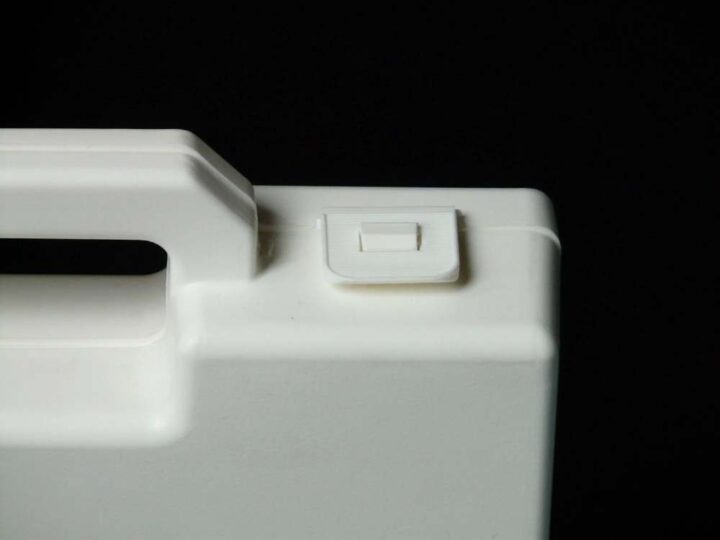Weathering the Elements: How Weatherproof Electronic Enclosures Work
Weatherproof electronic enclosures play a pivotal role in extending the lifespan and functionality of sensitive electronic equipment. These robust structures are designed to withstand various environmental conditions, from extreme temperatures and moisture to dust and corrosive substances.
They’re not just boxes; they’re a shield against the elements, acting as a first line of defense so that the electronics housed within can perform their critical roles uninterrupted. This article will delve into how these weatherproof enclosures work, their key features, and why they are an essential investment for any industry relying on outdoor electronics.

Material Choices for Weatherproof Electronic Enclosures
When it comes to weatherproof electronic enclosures, selecting the right materials is crucial for optimal protection against the elements. Metals like stainless steel or aluminum are often preferred due to their exceptional strength and resistance to corrosion. An aluminum enclosure, besides being lightweight and cost-effective, offers excellent heat dissipation properties, making it a top choice for electronic devices that generate a significant amount of heat.
These materials not only provide a robust shield for the sensitive electronics inside but also ensure longevity in challenging environmental conditions. On the other hand, plastics such as polycarbonate and ABS (Acrylonitrile Butadiene Styrene) offer unique advantages like lightweight construction, durability, and excellent insulation properties, making them a popular choice for certain applications.
Design Features of Weatherproof Enclosures
Weatherproof enclosures are far from being simple boxes; they are meticulously designed to incorporate various features that guarantee the safety and reliability of the electronics housed within. These design elements include specially engineered gaskets that create a tight seal, preventing the ingress of water, dust, and other contaminants.
Ventilation systems are strategically integrated to allow for proper airflow, dissipating heat generated by the electronics and preventing overheating in high-temperature environments. Additionally, cable glands are incorporated to ensure secure and watertight cable entry points, further safeguarding the integrity of the enclosure.
Standards and Certifications
Ensuring that the chosen weatherproof enclosure meets industry standards is of utmost importance. Certifications such as IP (Ingress Protection) ratings and NEMA (National Electrical Manufacturers Association) ratings provide valuable information about the level of protection an enclosure offers against dust, water, and impact. These standardized ratings give users confidence that their electronics will remain safe and operational even in harsh conditions, reducing the risk of costly failures or downtime.
Customization Options
To address specific project requirements, many enclosure manufacturers offer customization options. This allows for the creation of enclosures that are tailored precisely to the application at hand.
Customization options can include selecting unique sizes or dimensions to accommodate specific equipment, incorporating special cutouts or cable entry points to facilitate cable management, or even adding supplementary features like cooling fans or heating elements to meet specific environmental demands. The ability to customize enclosures ensures a perfect fit and optimal functionality for a wide range of applications.
Maintenance and Lifespan of Enclosures
Regular maintenance plays a significant role in extending the lifespan of weatherproof electronic enclosures. Implementing a routine cleaning schedule to remove dust and debris helps to prevent buildup that could compromise the integrity of the enclosure.
Checking and replacing worn-out gaskets ensures that the seal remains tight, maintaining the enclosure’s protective properties. Periodically inspecting the enclosure for any signs of damage or corrosion allows for timely repairs or replacements, preserving the enclosure’s longevity and effectiveness.
The Role of Enclosures in Different Industries
Weatherproof enclosures play a pivotal role in various industries, safeguarding critical electronics and ensuring uninterrupted operations. From telecommunications and energy sectors to transportation and defense applications, these enclosures are an indispensable component in protecting sensitive equipment from environmental variables.
By shielding electronics from moisture, dust, extreme temperatures, and other external factors, weatherproof enclosures contribute to the smooth functioning of essential services and infrastructures worldwide. Their reliability and durability make them an invaluable asset in maintaining the integrity and performance of electronic systems in diverse and challenging environments.
In a world increasingly reliant on sophisticated electronic devices, the importance of weatherproof electronic enclosures cannot be overstated. They serve as the stalwart protectors of our electronics, enduring harsh conditions while ensuring uninterrupted functionality. Made from robust materials and incorporating ingenious design elements, these enclosures not only fortify equipment against external threats but also guarantee their longevity.
Adherence to industry standards and the flexibility of customization make them a versatile solution adapted to a variety of industries. From telecommunications to energy sectors, these enclosures allow for the seamless operation of vital services across the globe. As technology continues to evolve, so too will the design and capabilities of these enclosures, ever bolstering our defenses against the relentless onslaught of the elements.


